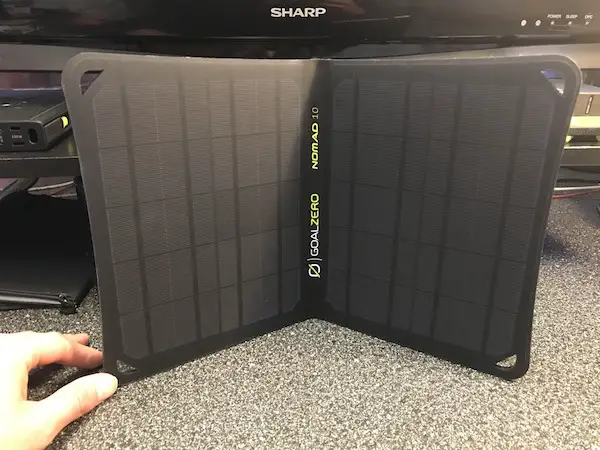Cell Phones are becoming increasingly essential for daily living. In off-grid living, they help in keeping communication with friends, family, colleagues, and the likes. For this reason, a solar charger is important to charge a cell phone outdoors. Smartphones are very portable, making them easy to use outdoors. However, the main problem is their duration of charge with solar chargers.
A solar charger will charge a typical cell phone in 2.5-3 hours from a 5W solar panel, 1.3-1.6 hours from a 10W panel, 52 minutes to 1.1 hours from a 15W panel, and 39-50 minutes from a 20W panel. These stats are based on a solar charger utilizing 80-100% of its listed power output.
Both the wattage of your solar charger as well as the battery size of your smartphone come into play when estimating recharging times.
The average charge times for various popular smartphones can be seen below.
| Cell Phone Model | Charge Time (5W Panel) | Charge Time (10W Panel) | Charge Time (15W Panel) | Charge Time (20W Panel) |
|---|---|---|---|---|
| Samsung Galaxy S20 / S21 | 3-3.8 hrs | 1.5-1.9 hrs | 1-1.3 hrs | 46 min – 1 hr |
| iPhone 13 | 2.5-3 hrs | 1.2-1.5 hrs | 50 min – 1 hr | 37-45 min |
| iPhone 12 | 2-2.6 hrs | 1-1.3 hrs | 42-52 min | 32-39 min |
| Google Pixel 5 | 3-3.8 hrs | 1.5-1.9 hrs | 1-1.3 hrs | 46 min – 1 hr |
| iPhone 11 | 2.4-3 hrs | 1.2-1.5 hrs | 47 min – 1 hr | 35-44 min |
| Combined Average | 2.6-3.2 hrs | 1.3-1.6 hrs | 52 min – 1.1 hrs | 39-50 min |
Cell phone batteries are measured in mAh and typically have the same battery voltage of 3.8V. I simply multiplied different popular cell phones by 3.8V to get the battery capacity of each cell phone battery in watt-hours (Wh).
| Phone Type | Phone Battery Size | Conversion to Watt-Hours (Wh) |
|---|---|---|
| Samsung Galaxy S20 / S21 | 4,000mAh | 15.2Wh |
| iPhone 13 | 3,227mAh | 12.26Wh |
| iPhone 12 | 2,775mAh | 10.5Wh |
| Google Pixel 5 | 4,000mAh | 15.2Wh |
| iPhone 11 | 3,110mAh | 11.8Wh |
With watt-hours available, I can now divide each cell phone’s battery capacity by the wattage of the solar panel charger to get the average hours of recharging time for each cell phone (as seen in the first table).
Other factors may influence the speed of charging a smartphone with a solar charger. Examples include the temperature, irradiance, position or angle of the solar panel, and charger type.
Read on to understand all about charging your cell phone effectively with a solar phone charger and see answers to common questions.
Similar: Solar Generator vs Battery – Which Is Ideal?
Solar Charger Size & Type – Three Main Types
A solar charger can either be a:
- Portable solar panel with USB ports – Plug in your phone directly into the panel
- Portable solar panel with a battery bank – Either plug your phone directly into the panel or use the battery bank to charge from solar first before using the battery bank to charge your phone
- Power bank with embedded solar panel – Solar panel is sealed to the battery bank
Most solar power banks with embedded solar panels have a good size battery but lack solar panel output power.
The best “solar charger” for recharging your cell phone is a portable solar panel of 10W or more along with a battery bank.
Using the solar panel to recharge the battery bank will be the best way to recharge your cell phone from solar because solar power is inconsistent due to weather changes.
This could affect the way the panel charges your phone if you connect them together without the use of a power bank.
For example, I used my Nomad 10 solar panel to directly charge my iPhone 7 and it worked successfully, however, any cloud cover would stop the charging and my phone would go back and forth from charging to not charging.
Charging a power bank would simply allow a faster charging process because it will provide consistent power to recharge your phone – as opposed to your phone constantly going in and out of sleep mode to show it’s charging.
If you’d like more information on power banks with embedded solar panels, I created a list of the top models and go into more detail on them in my article here: Top 7 Solar Panel Battery Banks – A Battle for Power.
Top 3 Solar Phone Charger Examples
The following examples will be portable solar panel models that can be used to charge your phone directly or indirectly via an optional battery bank.
In several cases, you can buy these in a kit along with a battery bank, like the Goal Zero Venture 35 with Nomad 10 kit (affiliate link).
1. BigBlue 28W USB Solar Charger
The BigBlue 28W USB solar charger is one of the most suitable chargers for cell phones. It possesses four different foldable SunPower solar panels that are very compact.
Also, it has three 5V/2.4A (max) USB output ports for simultaneous device charging.
However, the panel is best used with a maximum of two USB ports simultaneously to get the full 5V/2.4A for both ports.
This means that the USB ports combine for a maximum of 24W of output (5V/4.8A), which is not 28W but is still a relatively high number for a portable solar charger.
According to reviews, the BigBlue 28W USB solar charger appears to deliver a good output in sunny and, surprisingly, cloudy conditions.
On the downside, the BigBlue is a long solar panel when unfolded (33 x 11 x 0.2 in). Hence, users need to remain conscious of their size when using it for backpacking needs.
2. Nekteck 21W Solar Charger
The Nekteck 21W solar phone charger has three solar panels and two standard USB-A ports.
Each port is capable of 5V/2.0A when one port is used, but when using both ports, the maximum amperage is 3.0A (15W max).
Like the BigBlue, the Nekteck outputs less power than the panel says in its listing. That being said, 15W is enough to power up a smartphone or multiple phones when needed.
Although it has less power than the BigBlue panel, it’s more compact with an unfolded length of 26.2 inches.
This may be easier for you to mount onto your backpack or tent as it is about seven inches shorter than the BigBlue.
Impressively, it is also a lightweight solar charger, weighing only 18 ounces in total.
3. Goal Zero Nomad 10 Solar Charger
The Nomad 10 is an impressive product from Goal Zero.
It comes with a foldable solar panel, which has a wide surface area.
It weighs 1.2 pounds, which makes it relatively heavy, but compact.
The 10W, 6-7V panel comes with a built-in USB-A port, which functions effectively.
I’ve used this panel to successfully charge my phone directly, but the best option is to use one of Goal Zero’s battery banks for charging up.
The Flip 12 or Venture 35 are some options that are smaller for portability.
The two downsides to this panel are its decreased power output compared to the previous two panels as well as its cost.
The Nomad 10 by itself costs almost double that of the BigBlue or Nekteck panels.
But its compact size makes it useable for almost any purpose (9.5 x 14.5 x 0.75 inches unfolded).
You can see how the Nomad 10 worked in my own testing to charge my Sherpa power bank in my video below.
How Many Solar Panels Does It Take to Charge a Phone?
A single 10-watt solar panel will reliably charge a phone in good sunlight. However, portable solar chargers that are designed for charging phones typically have 3-4 compact solar panels attached together. This allows the panels to easily fold when they’re not being used.
Generally, what is required for a solar panel to charge a phone is a minimum of 5W (5V at 1A).
All solar panels usually have different power ratings, which point to the amount of power that they produce under standard conditions.
Similar: Portable Solar Panels: Advantages and Disadvantages
How Can I Speed up My Solar Charger?
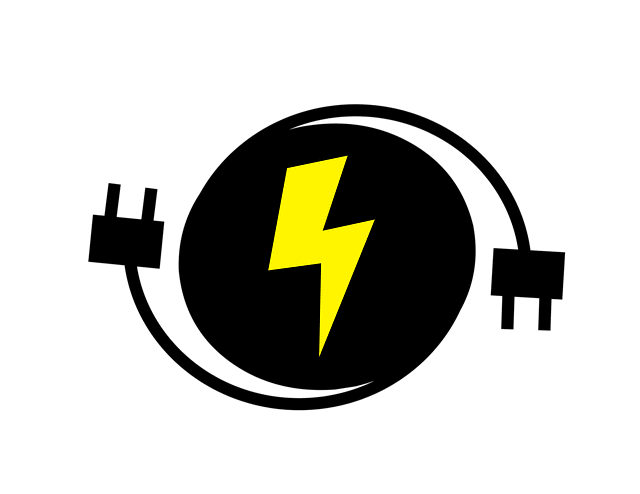
You can speed up your solar charger by angling it perpendicular to the sun and charging one device at a time. A direct angle to the sun allows the charger to absorb as much sunlight as possible. Charging one device at a time avoids splitting the charger’s output power between multiple devices.
If the device is placed outside your backpack while moving, please note that it may not charge fast.
Since you are on the move, there’s a high probability that the panels aren’t always facing the sun resulting in inconsistent charging.
If you want a faster charge from the solar phone charger, you may also consider using shorter cables.
Please note that shorter cables don’t necessarily make the solar phone charger work faster. However, it helps in the overall charging speed due to a minimal amount of wasted energy.
It may also be advisable to purchase a solar charger with a battery to help store power, which allows the user to charge at a time of convenience.
Similar: What Size Portable Solar Panel Do You Need? (Detailed Overview)
Do Solar Phone Chargers Really Work?
Solar phone chargers really work as long as they’re exposed to quality sunlight. It’s essential to pick a solar charger with at least 10 watts of power. A 10W solar charger will recharge a typical cell phone in 1.3-1.6 hours. Any charger less than 10W may output too slow of a charge to your phone.
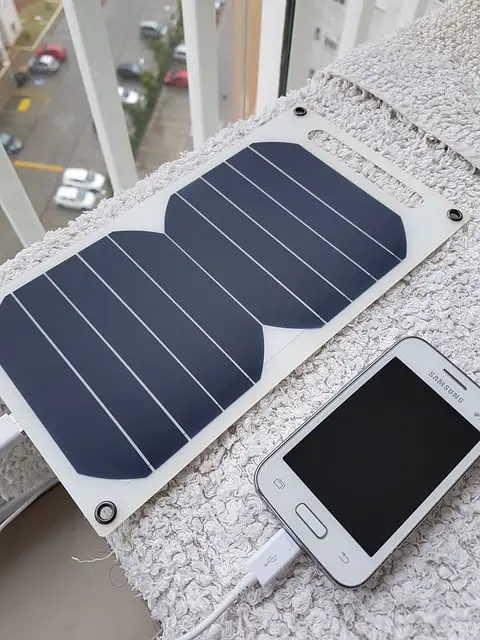
Solar phone chargers that are closer to 15 watts or higher can charge a mobile phone along with other devices simultaneously.
The portability of your solar phone charger matters a lot.
Hence, it is important to confirm the weight and dimensions (folded and unfolded) of any panel you intend to purchase.
If your solar phone charger has large folded solar panels, it may be too heavy to carry.
However, large folded solar panels may have higher efficiencies (charge devices faster) due to a wide surface area.
For example, my Elecaenta 120W solar panel is massive and weighs almost 12 pounds! But this is clearly too powerful of a panel for simply charging a phone in most scenarios.
Some solar phone chargers don’t function well compared to others, depending on their output.
Ensure that you pick a brand of solar charger that works efficiently and that has good and honest reviews.
If you ever come across issues with your solar charger, I have a guide to troubleshooting your panel to get it working again. I also have some maintenance tips to prevent you from running into any issues while using it off the grid.
Find my post here: Portable Solar Panel Not Working – Troubleshooting Guide.
Is There a Difference Between Rechargeable and Solar Batteries?
There is no difference between rechargeable and solar batteries. Solar batteries are used in storing chemical energy, which gets converted to electrical energy. Solar panels trap energy from the sun, and it gets stored in batteries for later use. Hence, solar batteries are rechargeable batteries.
In some cases, solar chargers don’t come with rechargeable batteries (or any battery at all), which is usually a challenge.
A significant example of a product that doesn’t come with a battery is the Nekteck 21W solar charger. Users will need to buy a separate battery pack to make it a power bank as well.
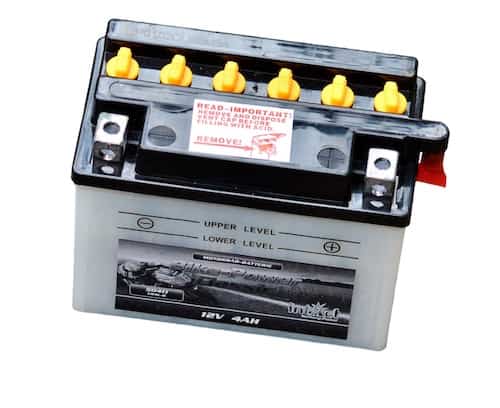
Rechargeable batteries are electrical batteries that can be discharged and charged multiple times. However, they are produced in different shapes, sizes, and specifications.
There are lots of different combinations of electrolytes and electrode materials utilized. Examples are nickel-cadmium (Ni-Cd), lithium-ion (Li-Ion), nickel-metal hydride (Ni-MH), lithium-ion polymer (Li-Ion polymer), and lead-acid.
Li-ion batteries are very stable batteries with a low self-discharge rate but high energy density and voltage capacity. Besides, they are very durable batteries.
Li-ion batteries tend to last for eight or more years and have nearly zero memory effect. So, even if the prices are a little high, it is worth the investment.
Continue Reading:
The #1 Fastest Charging Solar Power Bank
Top 7 Solar Panel Battery Banks – A Battle for Power
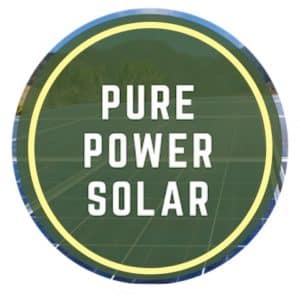
![[Upgraded]BigBlue 3 USB Ports 28W Solar Charger(5V/4.8A Max), Foldable Portable Solar Phone Charger with SunPower Solar Panel Compatible with iPhone 11/Xs/XS Max/XR/X/8/7, iPad, Samsung Galaxy LG etc. [Upgraded]BigBlue 3 USB Ports 28W Solar Charger(5V/4.8A Max), Foldable Portable Solar Phone Charger with SunPower Solar Panel Compatible with iPhone 11/Xs/XS Max/XR/X/8/7, iPad, Samsung Galaxy LG etc.](https://m.media-amazon.com/images/I/41p-j2XWwIL._SL500_.jpg)



